SRAM Apex AXS groupset review: is this low-end groupset a new high for electronic shifting?
A $1300 wireless electronic groupset? Yes please! Save your money for a decent wheelset instead
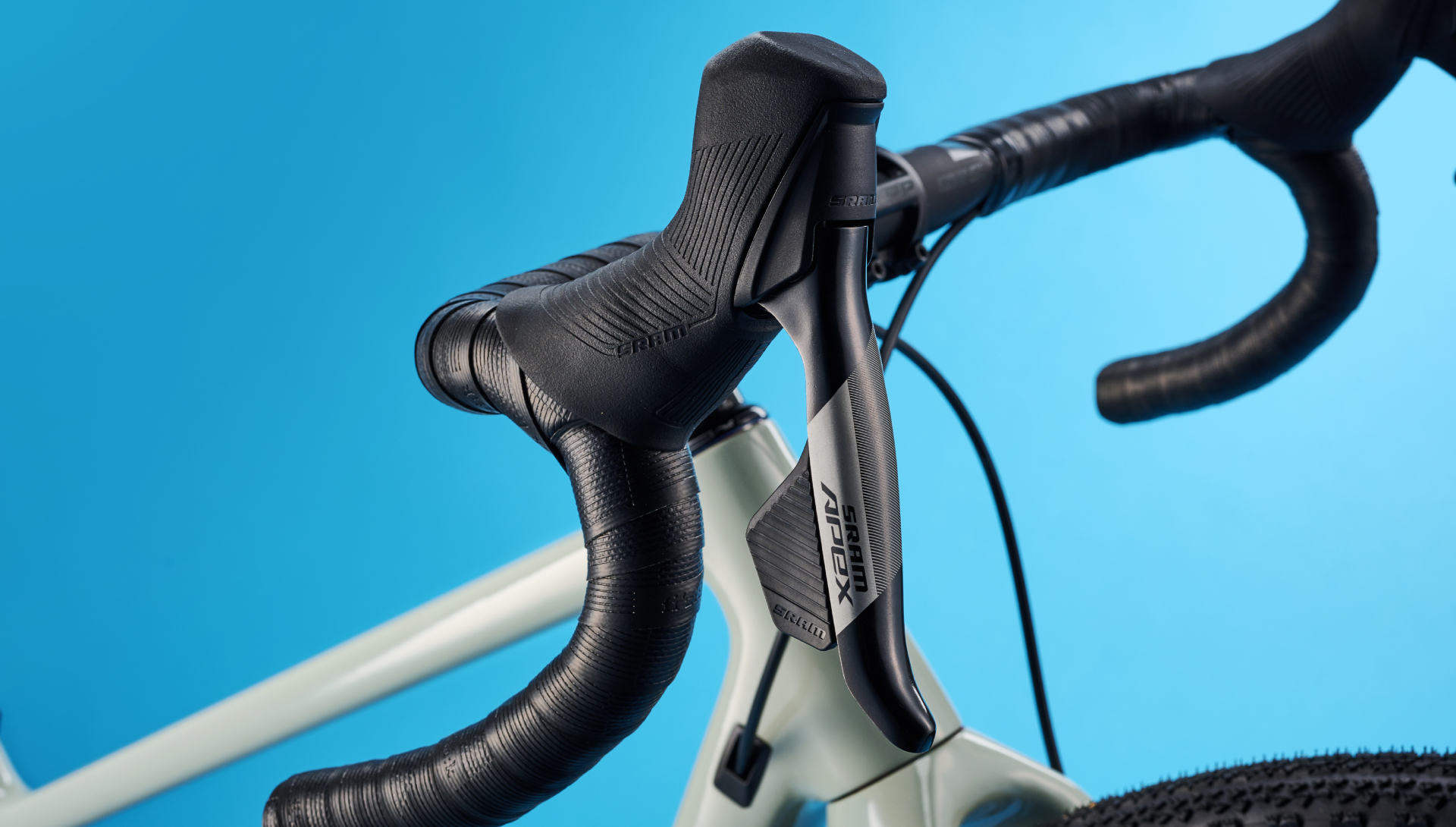
Trickle-down technology is a beautiful thing. I realize that many would overlook an entry-level groupset when looking for an upgrade, but SRAM Apex AXS is a superb groupset that delivers reliable, electronic shifting and powerful braking at an entry-level price.
-
+
Reliable, electronic shifting
-
+
Affordable power meter option
-
+
Only 100g more than Rival AXS
-
+
Parts are upgradable as long as derailleur, chain and cassette correspond
-
+
Groupset helps bring down cost of complete builds
-
-
Heavy cassette and chainring
-
-
Smallest gear is 11T, which is a 10% gearing loss from the other AXS groups
-
-
1x only
You can trust Cycling Weekly.

Trickle-down technology is a beautiful thing, and it may have taken SRAM eight years to get here but this season, the American component manufacturer (finally) introduced a wireless electronic groupset at the entry level.
For those unfamiliar with SRAM's product hierarchy, 'Red' identifies the top-tier products followed by 'Force'. Then there's 'Rival' and 'Apex' as the entry-level tiers.
When SRAM first introduced its wireless, electronic shifting to market back in late 2015, it only did so at the top-tier level, SRAM Red eTap. A hydraulic disc brake version soon followed, as did a so-called WiFLi rear derailleur, which was compatible with a wider range of gears. The eTap AXS (pronounced "access") ecosystem in use today was introduced in 2019 with again, the Red and Force level first, followed by a third-tier, SRAM Rival AXS, in 2021. With this Apex AXS release, a full four-tier lineup of SRAM wireless electronic products is now on offer.
While an Apex-level electronic groupset had always been part of the long-term plan, it took a backseat to the brand's priority to meet the demands for, and production of, innovations like hydraulic brakes, 1x drivetrains and wide range gearing. With those technologies now mastered and the electronic wireless shifting widely adopted by consumers at the higher end, Apex finally got the electronic treatment. The wireless electronic shifting is meant to simplify the riding experience so riders can focus on their ride, not their equipment.
"What makes this product introduction really timely are the countless new riders that have come to or returned to cycling in the last couple of years," says JP McCarthy, Road Product Manager at SRAM. "We are all super fortunate that cycling has not just weathered, but it's really thrived through a global pandemic. We think [Apex AXS] is particularly well-suited to the needs of new riders, both in features and in price point.”
While there are plenty of consumers still hesitant to adopt a wireless, battery-operated system —after all, a dead battery means you're now riding a single speed— benefits of the eTap system include precise, instant shifting with the push of a button; the option to shift multiple gears in just one click; programmable and customizable button functions; and a quick, clean installation —no cables to route!
I spent a good amount of time on the XPLR version this summer and these were my impressions.
The latest race content, interviews, features, reviews and expert buying guides, direct to your inbox!
SRAM Apex AXS: Gearing
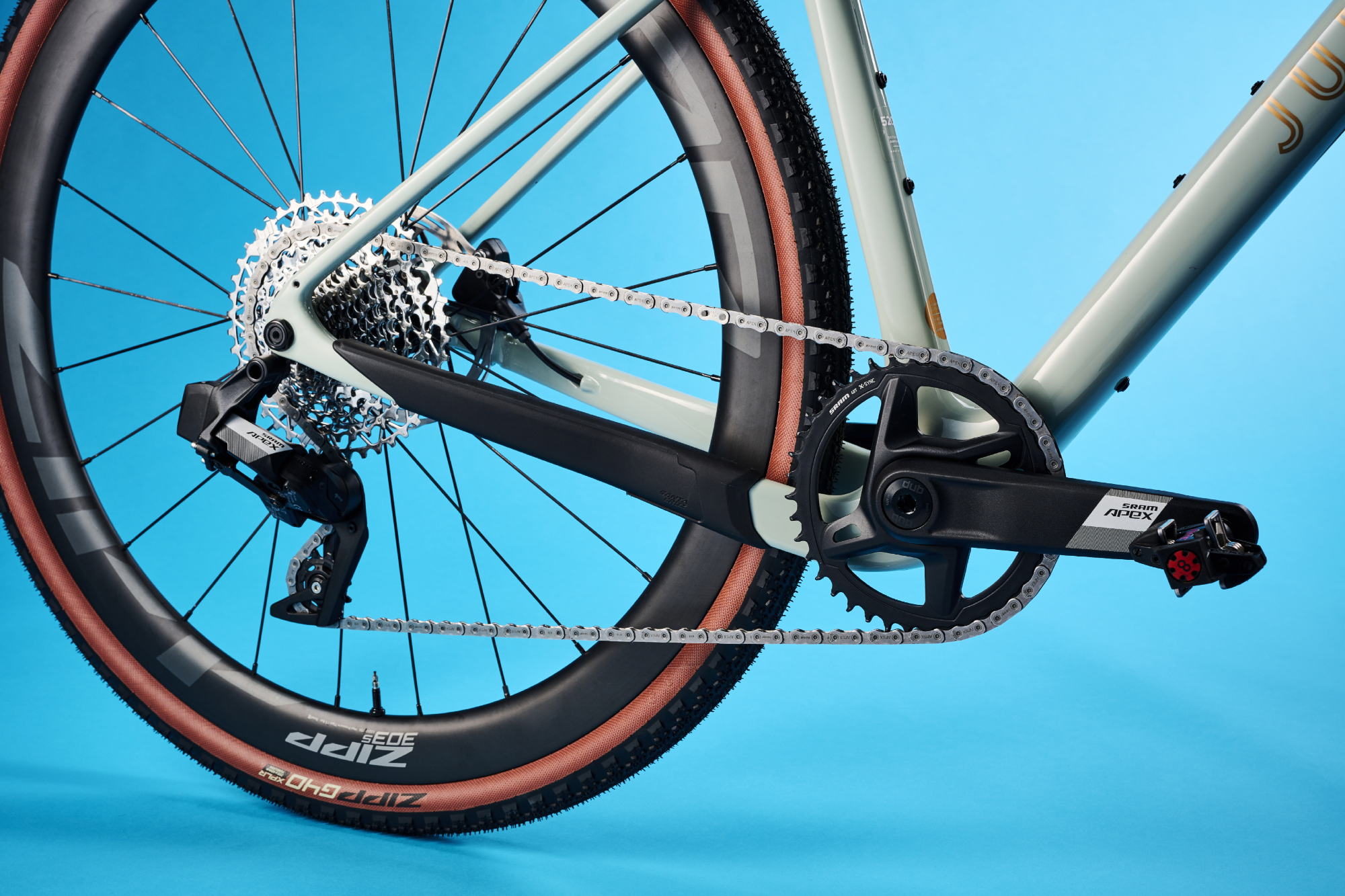
The new SRAM Apex AXS comes in two versions: the allround Apex XPLR AXS groupset with 11-36t and 11-44t cassette options, and the adventure-oriented Apex Eagle AXS, which comes with a gear range of up to 520% thanks to its 11-50t and 11-51t cassette options. A thing to note is that APEX AXS is purely oriented at the gravel market as it only comes in a 1x, 12-speed and hydraulic disc brake option. To convert the system to a 2x, one would need to upgrade the controls.
The aluminium cranks are built around a DUB spindle and direct-mount X-SYNC chainrings intended for a wider chain line and clearance for wider tyres. Cranksets sold through the OEM channel will come with a 40t steel chainring but aluminium chainrings ranging between 36t to 46t are available.
Unlike the rest of SRAM's AXS groupsets, the Apex tier is compatible with a regular, 11-speed HG-splined freehub body instead of the SRAM-specific XDR drivers. While this allows for more wheelset compatibility, there is a 10% gearing loss from the other AXS groups as the smallest gear is now a 11T instead of 10T. For those exploring on the paths less travelled or playing in the backcountry, this may go unnoticed. However, on rides that involved some fast pavement or in a group setting, I certainly missed that one gear. If you’re looking to race, I’d recommend upgrading ever so slightly to the Rival level.
SRAM Apex AXS: Shifting
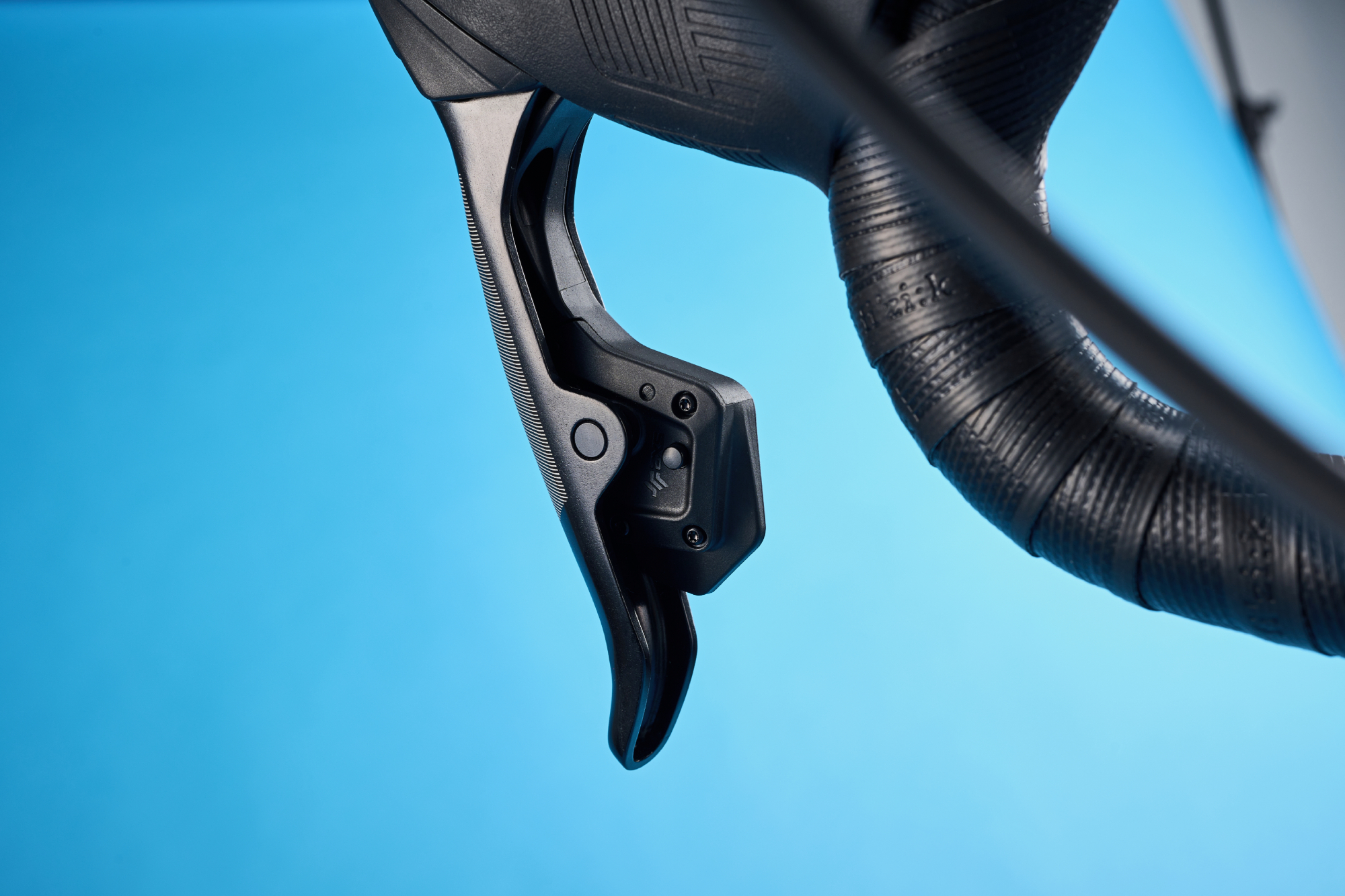
Like the Rival group, Apex AXS makes use of a mix of aluminium, steel and plastic rather than carbon as seen on the higher-end groupsets. This cost-cutting change is noticeable in the groups overall weight and aesthetics but not its useability.
Slimmed down from the Rival versions, the Apex AXS shifters feature a new, optimised hood shape meant to fit even those with small hands, and new, textured hoods and paddles for control and comfort. The grippy texture feels really good and instils some ease of mind for those who, like myself, find themselves riding in wet and muddy conditions frequently. No slippage here! The paddles are easily reached and engaged no matter your choice of glove.

Both the XPLR and Eagle rear derailleurs feature a spring clutch for quiet and secure chain management on- or off-road. Additionally, the Eagle AXS derailleur features cage lock technology for fast wheel changes or chain installation. Even without that extra feature, the XPLR derailleur delivered reliable shifting and I did not experience any dropped chains despite riding the groupset on some exceptionally rough terrain.
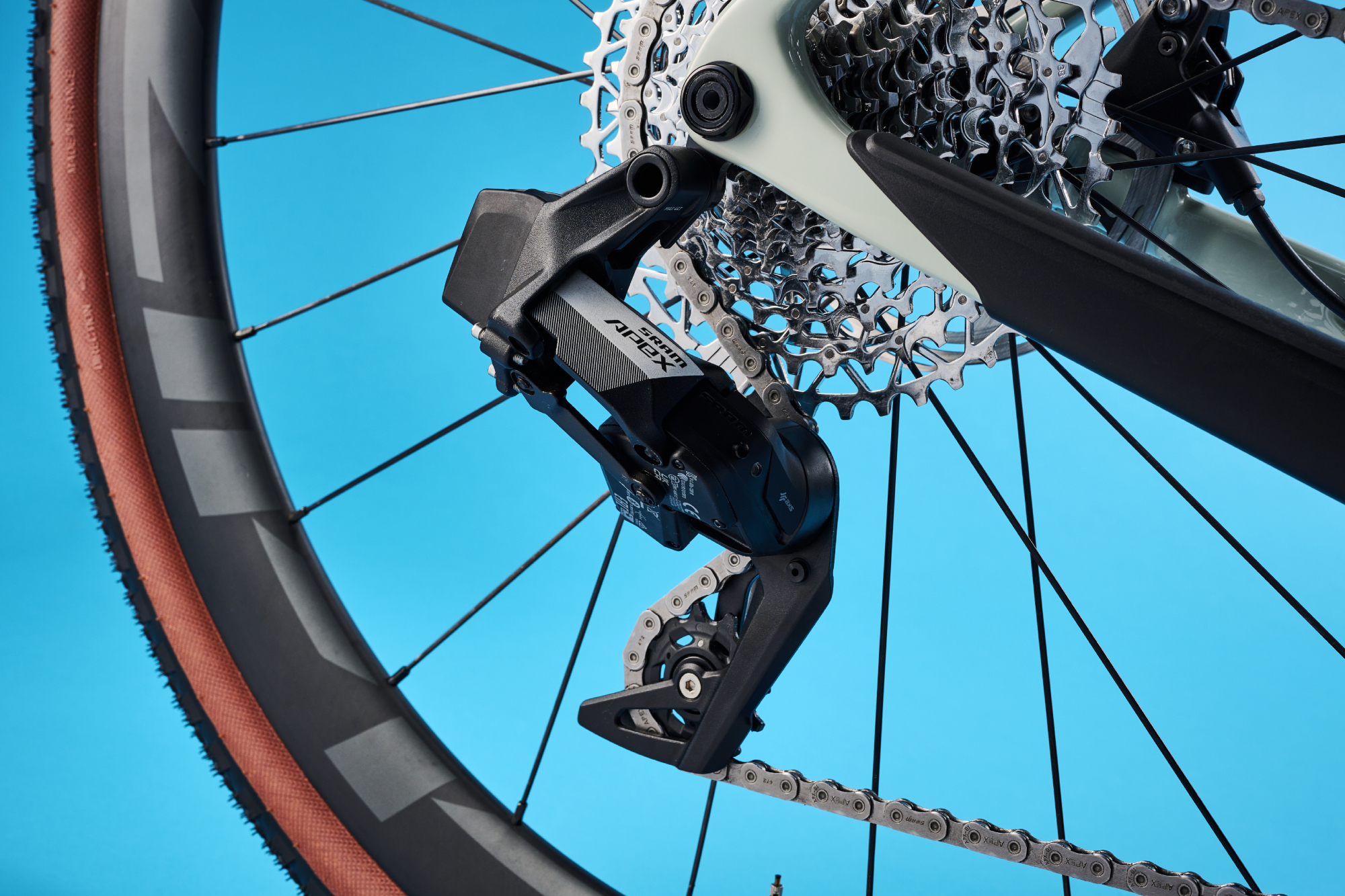
While billed as an entry-level groupset, SRAM did not hold back on the features, including wireless blip compatibility. My test groupset came with two blips on the bottom of the handlebars for easy shifting when riding on top of the bars instead of in the hoods or drops. I’ve been a longtime fan of these wireless blips and was glad to see them as part of the trickle-down technology.
When it comes to the groupset’s shifting performance, it’s nearly indiscernible from its Rival siblings and while perhaps a fraction slower and more clunky than the top-end tiers, the performance is pleasantly familiar and perfectly reliable.
SRAM Apex AXS: Braking
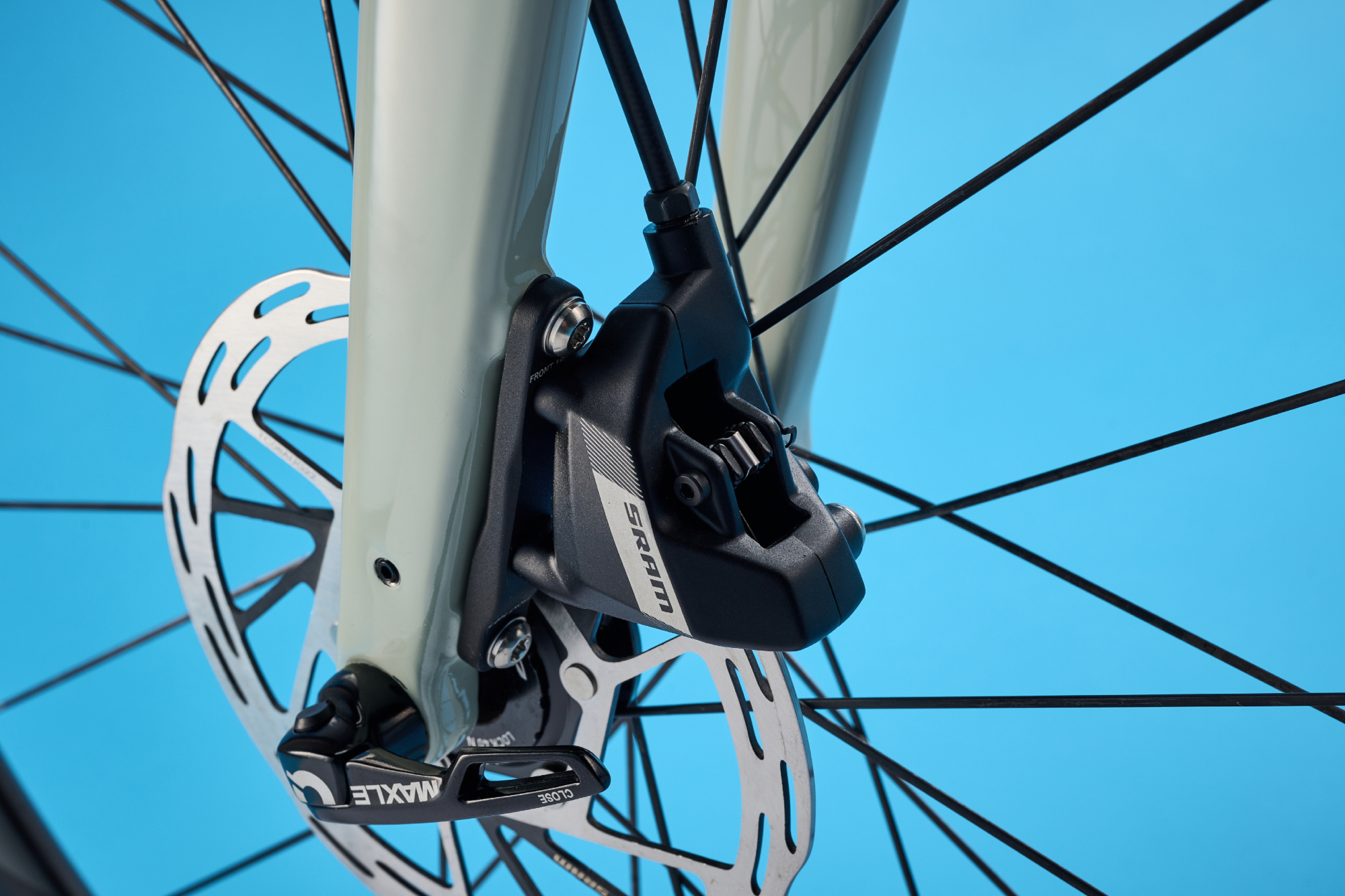
Like the Rival groupset, the flat-mount Lever brake callipers are bereft of the bleeding edge port as seen on the Force and Red groups. The brakes are instead serviced using the old 11-speed HDR bleeding process. All other changes to the calliper are purely cosmetic.
I found the brakes to be sufficiently powerful and controllable, instilling confidence in both the entry-level and experienced rider alike.
SRAM Apex AXS: value and conclusion
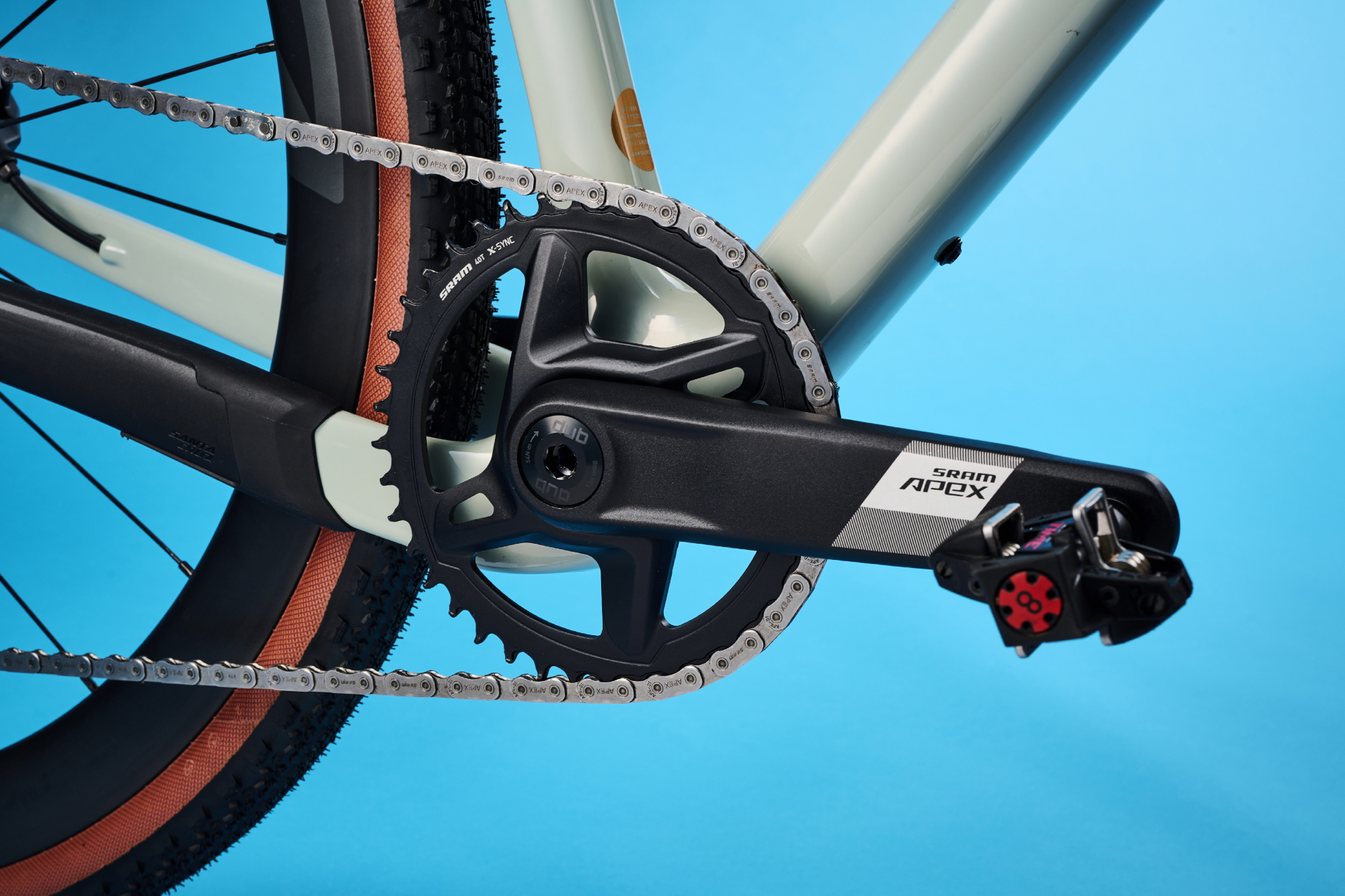
SRAM Apex AXS is a superb groupset that delivers reliable, electronic shifting and powerful braking at an entry-level price. Arguably, the most discernible difference between the existing AXS groups and the new Apex is aesthetics. To lower product cost, SRAM made material changes throughout the components, relied less on machining and decided on a simplified finish. Rather than a shiny, polished finish, the Apex products feature a matte, laser-etched finish. While the new Force groupset features some fun, blingy touches, I am not at all put off by this simple finish. It lets the eye wander to the frame colourway instead.
On the scale, the difference between Apex and Rival are minimal. The complete Apex AXS groupset —batteries, bottom bracket, disc brake rotors, chain, lockrings, housing and hydraulic fluid included— weighs 2,976 grams for the XPLR versions and 3,267 grams for the Eagle version. That's only around 100 grams more than its Rival AXS and Apex mechanical siblings.
If you're looking to shave weight or upgrade your groupset over time, you can do that as long as the derailleur, chain and cassette correspond. The steel chainring and heavier cassette would be the biggest bang-for-your buck in terms of weight savings.
Again, SRAM didn’t skimp on any features on this Apex groupset, including a power meter option. Not just for elite riders anymore; the aftermarket power meter upgrade comes in the form of a single-sided, spindle-based power meter that nestles into the crank arm and delivers precise and reliable power data. The upgrade is just 40g heavier than a standard crankset and retails for $220.
Sans upgrades, the XPLR grouptest retails for just $1195 / £1227. SRAM tells Cycling Weekly that it expects to see most of its Apex AXS sales to come from the OEM channel — bike brands spec'ing the groupset on its complete builds — which can only be a good thing as brands are able to offer complete builds with lower pricetags. At time of publication, we’re already seeing some brands offer full carbon frameset and wireless, electronic shifting courtesy of the new Apex AXS at prices below the $3,000 / £2,600 mark. In my opinion it’s here, in the cost-lowering of complete builds, where the true value of this Apex AXS groupset lies. And I’m sure that I speak for many when I say that in a market that’s been promoting bikes for as much as $14,000 / £13,000, this is a welcomed turn.
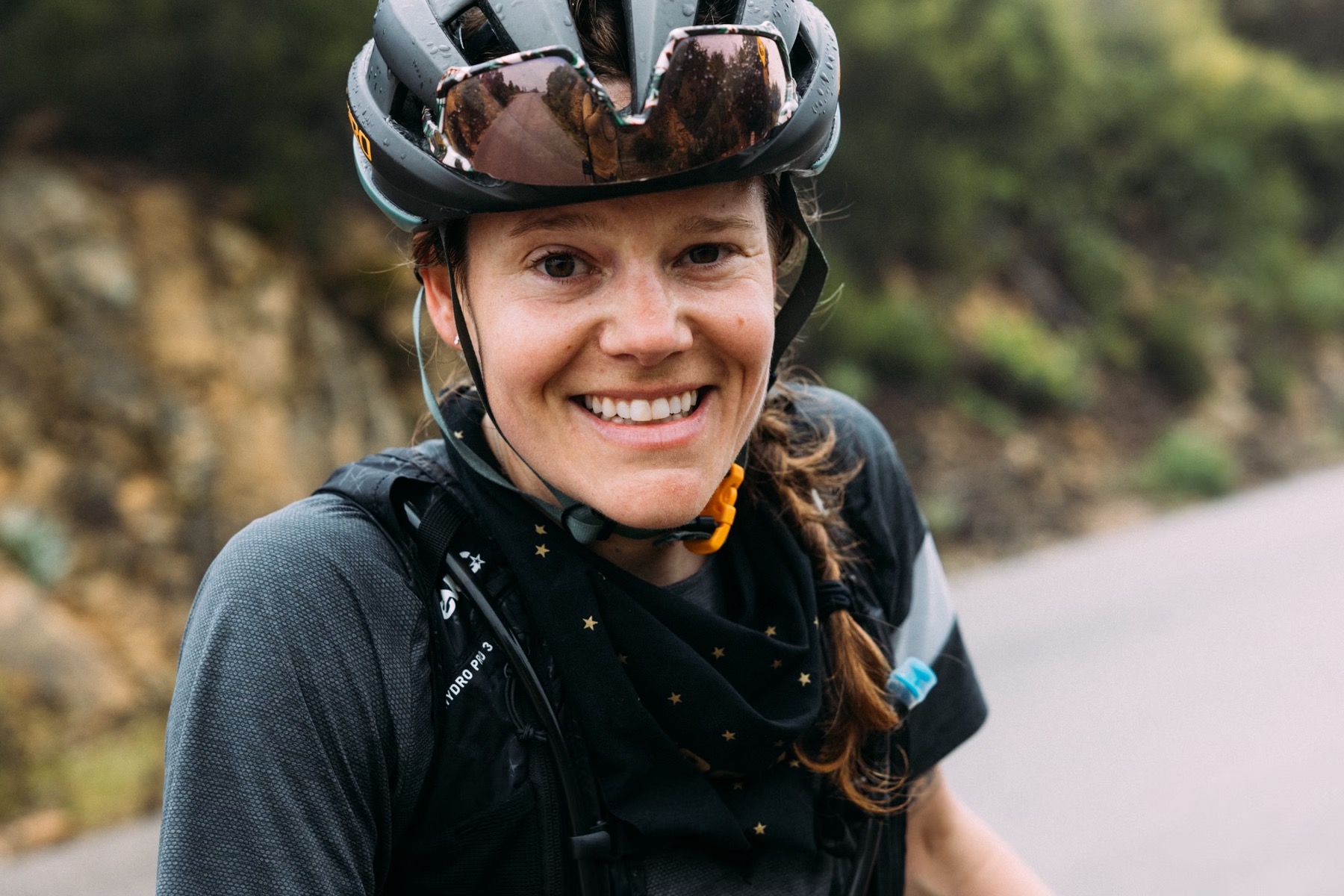
Cycling Weekly's North American Editor, Anne-Marije Rook is old school. She holds a degree in journalism and started out as a newspaper reporter — in print! She can even be seen bringing a pen and notepad to the press conference.
Originally from the Netherlands, she grew up a bike commuter and didn't find bike racing until her early twenties when living in Seattle, Washington. Strengthened by the many miles spent darting around Seattle's hilly streets on a steel single speed, Rook's progression in the sport was a quick one. As she competed at the elite level, her journalism career followed, and soon, she became a full-time cycling journalist. She's now been a journalist for two decades, including 12 years in cycling.